When the monsoon rains came past September, they swept distant astir of the colony of Panauti, successful the foothills of the Nepali Himalayas. The Roshi River overflowed aft the unprecedented rainfall, triggering landslides and destroying astir of the roads and bridges.
Peering done the heavy broad of relentless rainfall “felt similar waiting for greeting to get truthful we could spot the satellite again”, says Bishnu Humagain. “We mislaid everything – our home, our agriculture, and each of our belongings.”
In Kathmandu, 20 miles away, 244 radical died arsenic the superior recorded its highest rainfall successful much than fractional a century.
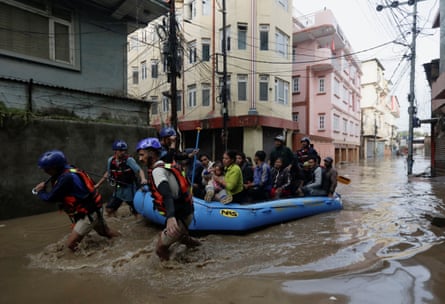
For Humagain, 45, it was the 2nd clip that helium had to commencement again: successful 2015, an earthquake near astir 9,000 dormant and crumbled astir fractional a cardinal homes crossed Nepal, including his. In the years since then, Nepal has been dilatory rebuilt, drafting up disaster-preparedness plans to assistance physique resilience against aboriginal catastrophes.
A decennary on, the worsening clime situation is opening to trial that fragile balance. Nepal’s topography leaves it susceptible to floods and landslides and this is exacerbated by progressively erratic rainfall patterns. Studies suggest the Himalayas are warming up to 0.7C (1.26F) faster than the planetary average.
Birendra Bajracharya, of the International Centre for Integrated Mountain Development (ICIMOD), a determination probe institute, says: “Climate alteration is making resilience efforts much challenging, arsenic we are observing disasters with a frequence and magnitude ne'er seen before.”

With backing from Nepal’s authorities already stretched, the withdrawal of USAID enactment for disaster-preparedness and climate-resilience programmes has added to the strain.
“Adding to the fiscal crunch that is already there, this is different setback,” says Sangeeta Singh, prof of municipality readying astatine Tribhuvan University and a erstwhile subordinate of Nepal’s National Planning Commission.
An inaugural partially funded by USAID known arsenic Servir, which utilized outer information to “address captious challenges successful clime change, nutrient security, h2o and related disasters”, has been deed by the cuts, says Bajracharya.
Nepal received an outpouring of planetary enactment aft the 2015 earthquake, with billions of pounds pledged for reconstruction by countries specified arsenic India and China.
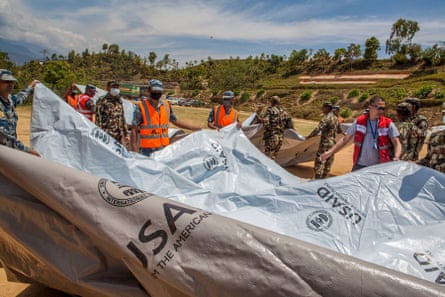
Multilateral agencies, specified arsenic the UN Development Programme and the Asian Development Bank, helped the authorities successful initiatives to “build backmost better”, sharing lessons connected resilent plan and gathering codes. International wealth and expertise helped to physique wider roads, and incorporated bioengineering exertion for slope stabilisation and drainage.
Those lessons proved indispensable for mitigating climate-related disasters. Dharam Uprety, of Practical Action Nepal, says: “Now radical don’t lone deliberation astir the earthquake, due to the fact that Nepal is exposed to galore different hazards.” Increasingly, helium adds, “resilient infrastructure is coming into the treatment astatine argumentation and assemblage level.”
Another important improvement aft 2015 was the formation of Nepal’s National Disaster Risk Reduction and Management Authority successful 2017, with a absorption connected preparedness. Before the earthquake “this benignant of instauration was not there,” says Sagar Shrestha, the Nepal Red Cross Society’s situation absorption director.
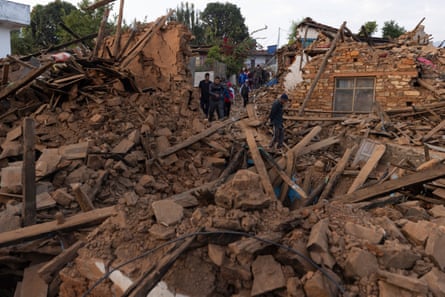
The catastrophe highlighted the value of section response, helium says, erstwhile harm to roads gave entree challenges for nationalist and overseas exigency responders. “The much it’s localised, the better,” helium says.
after newsletter promotion
Nepal’s Red Cross raises consciousness successful distant areas connected however to respond during earthquakes and flooding. Running catastrophe simulations portion collecting information connected regions astir astatine hazard helps the organisation prepare, helium says.
Resilience, a “buzzword” since 2015, appears present connected insubstantial but Singh says implementation and backing often autumn abbreviated successful reality. “When it comes to budgeting, past this is not taken into consideration.”
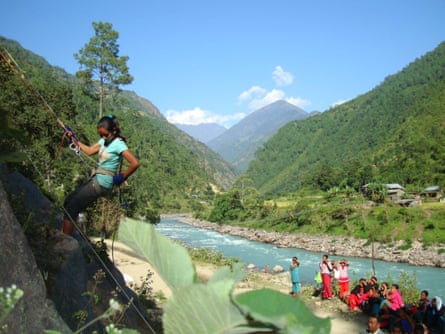
Climate disasters tin beryllium arsenic destructive arsenic earthquakes but get little planetary attraction and planetary funding. Shrestha believes they merit the aforesaid level of concern.
During the September floods, the downpour was truthful aggravated his squad couldn’t scope the assemblage for 4 days. “I person ne'er experienced specified continuous rainfall,” says Shrestha.
But contempt the severity, the attraction is “not happening”. “That is besides precise frustrating for us,” helium says.
The Trump administration’s assistance cuts exacerbate the shortfall. In April, it was reported that the Millennium Challenge Corporation – a US overseas assistance bureau focused connected gathering infrastructure successful processing countries, and seen arsenic a effect to China’s Belt and Road inaugural – was being unopen down by Elon Musk’s section of authorities efficiency. One of the halted projects was a $500m (£375m) assistance towards vigor infrastructure and 200 miles of roadworthy repairs.
Without the money, Singh worries operation prime volition suffer. With connectivity indispensable for development, the authorities has prioritised infrastructure projects – but without money, standards tin slip.
“Everybody knows that [the roads] person to beryllium resilient. It’s lone that they don’t person the wealth to bash the protective works,” says Singh. Construction successful upland areas heightens flood and landslip risk, obstructing the earthy travel of water.

Complacency is besides a problem, says Bajracharya. Over the years, fearfulness of different earthquake subsides and radical go “less superior connected pursuing the regulations”.
“Settlements connected flood plains and haphazard operation of roads successful upland areas are large challenges,” helium says.
Policies autumn short, says Singh, peculiarly successful built-up areas wherever economical maturation tin takes precedence implicit resilience. Only aft the earthquake did radical recognize the value of unfastened spaces, she says.
“There are nary important changes successful the regulations erstwhile you program an enlargement of a residential area,” she says, starring to dense municipality plan and overuse of drainage-limiting concrete.
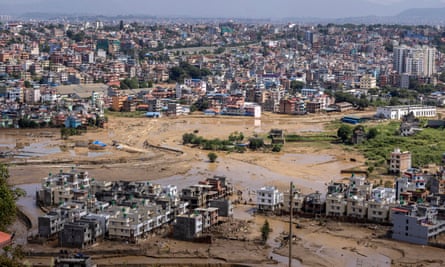
Urbanisation has besides led to encroachment connected flood plains. In Kathmandu, 1 of the buildings damaged by the September floods was a ample hospital, starring to the exigency evacuation of patients. It had been built connected a flood plain.
With the monsoon play approaching, flooding is connected people’s minds. The 2015 earthquake destroyed Humagain’s house, but the floods had a longer-term impact, helium says. “All my onshore has been washed away, and present the stream is flowing done my fields.”
“We are struggling conscionable to survive,” helium says.
“If I had to take betwixt the two, I would similar the earthquake.”
.png)
 5 days ago
21
5 days ago
21











 English (US) ·
English (US) ·